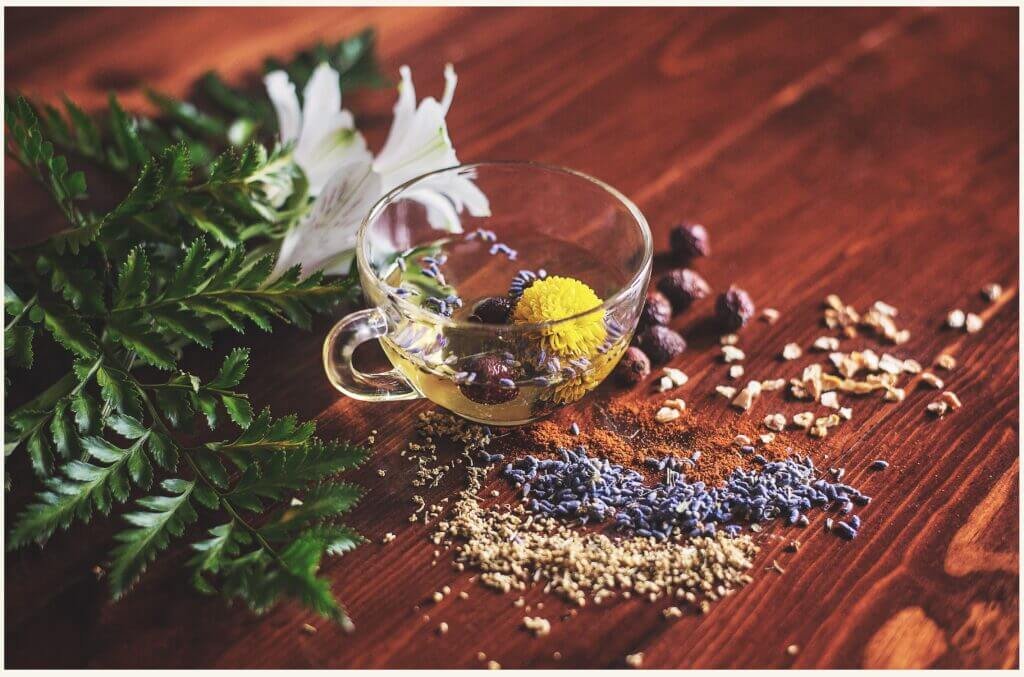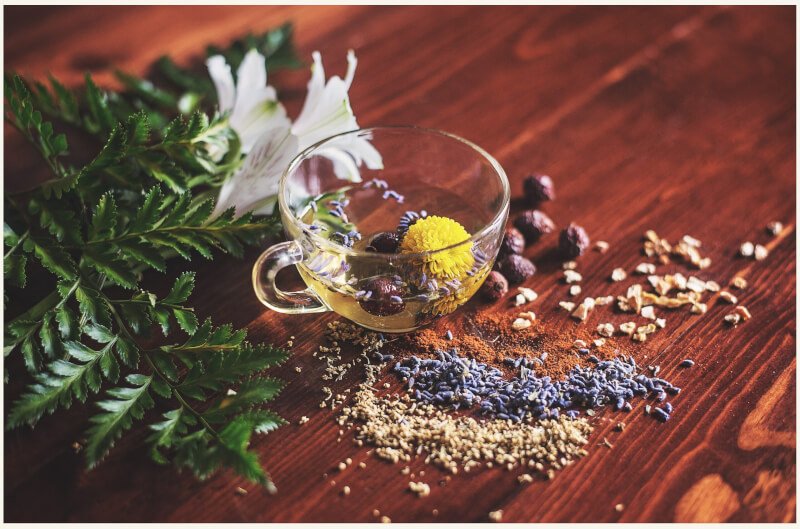Are you a tea lover looking to explore new flavors and add some excitement to your daily cuppa? If so, you might be wondering how to experiment with flavor infusions in specialty tea. Well, the good news is that there are plenty of ways to get creative and enhance your tea-drinking experience. Whether you prefer fruity, floral, or spicy notes, read on to discover some simple yet effective techniques to infuse your favorite specialty teas with a burst of delightful flavors.

Choosing the Right Tea Base
Choosing the right tea base is crucial when it comes to flavor infusions. The tea base serves as the foundation upon which all the other ingredients and flavors will be built. To determine the flavor profile of the tea base, consider factors such as the origin, type, and the level of oxidation of the tea. Each tea variety has its own unique characteristics, ranging from delicate and floral to bold and robust.
Determining the Flavor Profile of the Tea Base
To determine the flavor profile of the tea base, you need to understand the different characteristics of various tea types. For example, green teas tend to have a fresh, grassy flavor with a hint of sweetness. Black teas, on the other hand, are known for their strong, bold flavor and malty notes. Oolong teas offer a balance between the floral and fruity flavors of green teas and the rich, earthy flavors of black teas.
Considering the Brewing Method
When selecting a tea base for flavor infusions, it’s important to consider the brewing method you’ll be using. Some teas are best suited for hot brewing, while others lend themselves well to cold brewing or even iced tea infusions. Take into account the temperature and steeping time required for the tea base you choose, as they can greatly influence the overall flavor and strength of the infusion.
Selecting the Appropriate Tea Type
After considering the flavor profile and brewing method, it’s time to select the appropriate tea type for your flavor infusion experiments. If you’re looking for a light and floral infusion, opt for a delicate white or green tea. For a more robust and full-bodied flavor, black teas or oolong teas would be a better choice. Ultimately, the tea type you choose will depend on your personal preferences and the specific flavors you want to highlight in your infusion.
Exploring Different Types of Tea Infusions
Once you have chosen the right tea base, it’s time to explore different types of tea infusions. This is where you can get creative and experiment with a wide range of ingredients to create unique and flavorful blends. Here are some popular types of tea infusions to inspire your culinary adventures:
Fruit Infusions
Fruit infusions involve adding fresh or dried fruits to the tea base to impart their natural sweetness and vibrant flavors. Whether it’s slices of juicy oranges, chunks of ripe mangoes, or tangy berries, fruits can add a refreshing and tropical twist to your tea. Experiment with different combinations of fruits to create a blend that suits your taste buds.
Herbal Infusions
Herbal infusions, also known as tisanes, are made by steeping various herbs and botanicals in hot water. These infusions are naturally caffeine-free and offer a wide range of flavors and health benefits. From soothing chamomile to invigorating peppermint, the world of herbal infusions is vast and exciting. Feel free to mix and match different herbs to create your own unique blend.
Floral Infusions
Floral infusions are created by infusing tea with edible flowers such as rose petals, lavender, or hibiscus. These infusions offer a delicate and aromatic experience, with the floral notes complementing the natural flavors of the tea base. Experiment with different flowers to find the perfect balance between the tea and floral flavors.
Spice Infusions
If you’re a fan of bold and warm flavors, spice infusions are the way to go. Adding spices like cinnamon, cardamom, ginger, or cloves to your tea base can create wonderfully aromatic and comforting infusions. These spices can be especially delightful during the colder months, providing a cozy and comforting drinking experience.

Blending Different Tea Varieties
Blending different tea varieties allows you to create complex and layered flavors that cannot be achieved with a single tea base. By understanding tea flavor profiles and experimenting with complementary flavors, you can create unique blends that suit your taste preferences.
Understanding Tea Flavor Profiles
Before diving into tea blending, it’s important to have a good understanding of the flavor profiles of different tea types. As mentioned earlier, green teas are known for their fresh and grassy flavors, while black teas have robust and malty notes. Oolong teas offer a balance between the two, with floral and fruity undertones. By blending different tea types, you can create a fusion of flavors that is both interesting and delicious.
Experimenting with Complementary Flavors
When blending different tea varieties, it’s important to experiment with complementary flavors. For example, if you have a bold black tea base, you might want to enhance its natural sweetness by adding a touch of fruity jasmine or incorporating warm spices like cinnamon and nutmeg. Similarly, a delicate green tea can be elevated with the addition of floral herbs like chamomile or lavender. Don’t be afraid to get creative and try different combinations to see what works best for you.
Adding Fruits and Vegetables
Adding fruits and vegetables to your tea infusions can add a refreshing and nutritious twist to your beverage. From enhancing the natural sweetness to introducing new flavors and textures, fruits and vegetables can elevate your tea infusion game.
Choosing Fresh, Ripe Ingredients
When adding fruits and vegetables to your tea infusions, it’s important to choose fresh and ripe ingredients. This ensures that you get the best flavors and nutrients from the produce. Whether it’s juicy strawberries, crisp cucumbers, or fragrant lemons, selecting high-quality ingredients will make a noticeable difference in the taste and overall experience of your infused tea.
Balancing Sweetness and Acidity
When adding fruits to tea infusions, it’s crucial to strike a balance between sweetness and acidity. Sweet fruits like mangoes or peaches can bring a natural sweetness to the tea, while citrus fruits like lemons or oranges can add a refreshing tartness. Experiment with different combinations to find the perfect balance for your taste buds.
Infusing with Citrus Fruits
Citrus fruits are a popular choice for tea infusions due to their bright and zesty flavors. Adding slices of lemon, lime, or even grapefruit to your tea can provide a burst of freshness and acidity that complements the tea base. Citrus fruits are particularly refreshing in cold brews and iced tea infusions during the hot summer months.
Enhancing with Leafy Greens
Don’t limit yourself to just fruits when experimenting with tea infusions. Leafy greens like mint, basil, or even spinach can add a unique and vibrant flavor profile to your tea. From cooling and refreshing mint leaves to the earthiness of basil, these greens can bring a whole new dimension to your infusion.

Using Herbs and Spices
Herbs and spices can add depth, complexity, and a touch of warmth to your tea infusions. By exploring the world of culinary herbs and carefully selecting spices, you can create infusions that are rich in flavor and aroma.
Exploring the World of Culinary Herbs
Culinary herbs offer a wide range of flavors, from delicate and aromatic to bold and peppery. Herbs like rosemary, thyme, or lavender can bring a unique twist to your tea infusions. Experiment with different herbs to see how they complement the natural flavors of the tea base.
Choosing Spices for Warmth and Depth
Spices are another excellent addition to tea infusions, especially if you’re looking for a warm and comforting drinking experience. Spices like cinnamon, ginger, nutmeg, or cloves can add depth and complexity to the infusion, creating a cozy and inviting flavor profile. Be mindful of the intensity of the spices and adjust the amount accordingly to avoid overpowering the tea base.
Balancing Intensity of Herbs and Spices
When incorporating herbs and spices into your tea infusions, it’s important to strike a balance between the intensity of the flavors. If you’re using a strong, bold tea base, you might want to go easy on the spices and herbs to prevent overwhelming the natural flavors. On the other hand, a milder tea base allows you to experiment with bolder flavors. Remember that the goal is to enhance the tea’s flavor rather than overpower it.
Incorporating Edible Flowers
Edible flowers add a touch of elegance and beauty to your tea infusions. Beyond their visual appeal, they offer delicate floral flavors that can take your infusion to the next level.
Discovering Floral Flavors
When incorporating edible flowers into your tea infusions, it’s important to consider their flavors and how they will complement your tea base. Flowers like rose petals, lavender, and hibiscus offer distinct and aromatic flavors that can enhance the natural flavors of the tea. Experiment with different flowers to discover your favorite floral flavors.
Considering Edible Flower Options
There are a plethora of edible flowers to choose from when experimenting with tea infusions. Some popular options include rose petals, chamomile, lavender, jasmine, and hibiscus. Each flower brings its own unique flavor, so don’t be afraid to mix and match to create your perfect floral blend.
Experimenting with Sweeteners and Extracts
Sweeteners and extracts can add a touch of sweetness and enhance the flavors of your tea infusions. Whether you prefer natural or artificial options, there are plenty of choices to suit your taste preferences.
Exploring Various Sweetening Options
When it comes to sweetening your tea infusions, you have several options to choose from. Traditional sweeteners such as honey or sugar can add a natural sweetness that complements the flavors of the tea. If you’re looking for a healthier alternative, you can try using stevia or agave syrup. Experiment with different sweeteners to find the right level of sweetness for your taste buds.
Using Natural and Artificial Extracts
Along with sweeteners, extracts can be used to enhance the flavors of your tea infusions. Natural extracts like vanilla or almond can add a subtle and pleasing aroma to the infusion. Artificial extracts, such as raspberry or lemon, can provide a burst of flavor without adding extra calories or sweetness. Be mindful of the potency of extracts and start with small amounts, gradually adding more until you achieve the desired flavor intensity.
Considering Tea Cocktail Creations
Tea cocktails offer a new and exciting way to enjoy your tea infusions. By combining tea with alcoholic beverages, mixers, and garnishes, you can create refreshing and sophisticated cocktails.
Infusing Tea into Alcoholic Beverages
Infusing tea into alcoholic beverages allows you to create unique and flavorful cocktails. For example, you can infuse your tea base in vodka, gin, or even rum to extract its flavors and create a base for your cocktail. The infused tea can be blended with other alcoholic beverages or mixed with fruit juices and soda to create a well-balanced and refreshing cocktail.
Blending Tea with Mixers and Garnishes
When creating tea cocktails, don’t forget to experiment with mixers and garnishes. From classic choices like lemon or lime slices to more adventurous options like muddled fruits or herbs, the possibilities are endless. Mixers like tonic water or ginger ale can add a touch of fizz and balance to your cocktail. Get creative and try different combinations to find your favorite tea cocktail creation.
Trying Cold Brews and Iced Tea Infusions
Cold brews and iced tea infusions are perfect for hot summer days or when you want a refreshing twist to your tea. These methods offer a different flavor profile and can showcase the natural sweetness and delicate flavors of the tea base.
The Art of Cold Brewing
Cold brewing involves steeping tea in cold or room temperature water for an extended period, typically overnight. This method allows the flavors of the tea to slowly infuse into the water, resulting in a smooth and mellow flavor profile. Cold brews are known for their natural sweetness and reduced bitterness, making them a popular choice for tea enthusiasts.
Experimenting with Fruits and Herbs in Iced Tea
When making iced tea infusions, you can take advantage of the flavors and textures of fruits and herbs to create a refreshing and vibrant beverage. From adding slices of fresh strawberries or cucumbers to infusing the tea with mint leaves or basil, the combinations are endless. Consider the balance of flavors and how they will complement the tea base when experimenting with different fruits and herbs.
Documenting and Evaluating Experiments
Throughout your flavor infusion experiments, it’s important to document and evaluate your results. This allows you to keep track of the flavors, ingredients, and ratios used, helping you recreate your favorite blends in the future.
Keeping Track of Flavors and Recipes
To document your experiments, create a tea infusion journal or spreadsheet where you can record the ingredients used, the brewing method, and your personal evaluation of the flavors. Take note of any modifications you made along the way and how they affected the taste of the infusion. This documentation will serve as a valuable resource for future reference and will help you refine your recipes over time.
Tasting and Evaluating the Infused Teas
After each infusion, take the time to evaluate and taste the results. Pay attention to the aroma, color, and most importantly, the flavor. Consider whether the balance of flavors is to your liking and whether any adjustments need to be made. Tasting and evaluating your infused teas allows you to fine-tune your recipes and create blends that truly satisfy your palate.
In conclusion, experimenting with flavor infusions in specialty tea is a delightful and creative journey. By choosing the right tea base, exploring different types of infusions, incorporating various ingredients, and evaluating the results, you can create unique and flavorful blends that cater to your taste preferences. So grab your teapot, get creative, and embark on a flavor-infused adventure with specialty tea!


